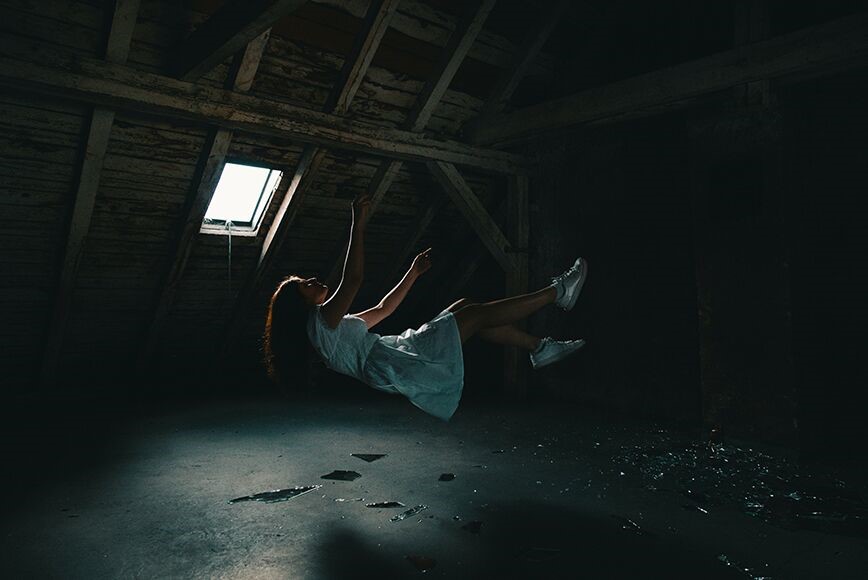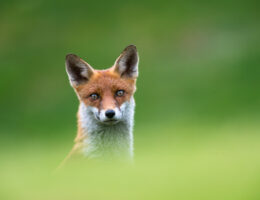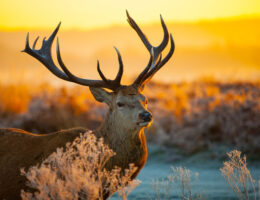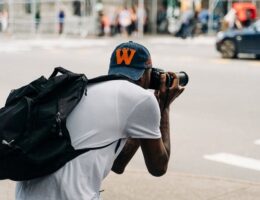IRAN ART EXHIBITION: CONCEPTUAL PHOTOGRAPHY COMMUNICATE AN IDEA WITH AUDIENCES
Conceptual photography is one of the more difficult genres to define because it can encompass such a wide range of subjects and styles. Conceptual photos do have one thing in common, though: they all set out to communicate an idea. The fact that conceptual photography is so creatively expansive and varied is also what makes it such a rewarding genre to get into. If you’re interested in using your camera to create some conceptual art, this guide is a great place to start. In it, we’ll look at 41 inspirational examples of conceptual photography that can spark ideas for your next project.
What is Conceptual Photography?
Conceptual photography is all about conveying a concept or idea. Unlike many other genres where moments or scenes unfold and the photographer captures them, conceptual photographers start with an idea and set about finding a way to illustrate it visually.
Conceptual photography is a powerful tool. It can convey messages, illustrate ideas, give form to abstract concepts. Often, it does this using symbols and visual metaphors.
Done well, such visuals can instantly transmit to the audience an idea that would be complex to explain in words. That’s the magic of conceptual art.
Though often linked to fine art photography, conceptual photography can also be used for editorial, education and advertising because of its message-conveying power.
Whether through a single image or a series of images, conceptual photography speaks to us in a highly unique way.
41 Inspirational Examples of Conceptual Photography
To help you get inspired to create some great conceptual photography, check out the conceptual photo tips and examples of creative fine art photography below.
1. Defy the laws of nature
Making people or objects levitate is a creative way to convey an idea in a conceptual photograph. You can defy gravity using wires (try fishing line for a near-invisible way to levitate objects) or by distorting reality using some Photoshop magic.
2. Catch the uncatchable
Hold out your hand. What can you catch (or appear to catch using forced perspective)?
The sun? The stars? A weathervane on a distant rooftop?
IRAN ART EXHIBITION: Add different objects into the mix to convey different ideas. You might “catch” a graffiti heart in a cage, say, or an isolated house in a glass bubble.
3. Make it fantastical
Part of the beauty of conceptual art is that it can eschew reality, giving you more options of how to get your message across.
Fantastical scenes can be created in Adobe Photoshop or other post-production software, allowing you to bring an otherwise impossible vision to life.
4. Take portraits of emotions
It’s easy to capture the expression of an emotion: a smile, a frown, a stream of tears. But it’s much more difficult to represent those emotions as concepts.
Try shooting portraits – even self-portraits – that give a clear visualisation of a particular emotion.
5. Try a double exposure
Using a double exposure technique can turn a straightforward portrait into a work of conceptual genius, merging not just two images but two ideas into a single concept.
6. Get creative with mirrors
Mirrors can symbolise so many things: truth, spiritual awareness, a philosophical journey into our deepest selves… They also lend themselves to imagery that dabbles in the surreal.
7. …And reflections
Reflections are all around, not just in mirrors. Consider those in bodies of water and shiny surfaces as well. One way to use reflective elements is as a portal into another world.
8. Capture your inner child
IRAN ART EXHIBITION: As well as being naturally beautiful subjects for photographs, children can also illustrate concepts like innocence, purity, the magic of childhood, and nostalgia.
9.Use external worlds to illustrate internal states
With analogical thinking, what we see around us can become an illustration of an internal state.
A boat on calm seas may represent inner peace, or – sailing toward the stars – a sense of adventure. Likewise, a thunderstorm may symbolise inner turmoil, etc.
10. Great creative with composites
Once you know how to create a composite in Photoshop, a world of possibility opens up for your conceptual photography. Merge two images together to convey a unique idea.
11. Use glass shards
Fragments of glass or broken mirrors can be used to create whatever concept you choose, whether it’s the idea of piecing an identity back to together or the suggestion of bad luck.
12. Find paths in nature
Not all conceptual photography has to involve complex setups. A simple path found in nature can symbolise a journey, regardless of whether a subject is visible or not.
13. Pay attention to composition
With the use of some simple objects and a highly creative composition, you make some incredible conceptual photographs.
14. Give a well-worn cliché a unique twist
Take a photographic cliché – like the top-down coffee-and-book shot that’s such an Instagram standard – and put a unique twist on it to turn it into conceptual art.
15. Use props to capture angels in our midst
You may not be able to photograph a real angel in flight, but a pair of prop wings can be a great way to make it look like there’s a heavenly creature in our earthly midst.
16. Merge natural and human elements
If you look hard enough, you’ll find that human systems are reflected in nature: lungs appear to have roots, lightning resembles veins, a fern leaf resembles a spine. Find ways to blur the two for compelling conceptual images.
17. Draw on well-known imagery
Some imagery is instantly recognisable (case in point: The Creation of Adam). Allude to it, and your audience will quickly make a connection and see something meaningful.
18. Give the viewer a unique perspective
What does an ant see when it looks to the heavens? What is it like to be a flower drinking in the sun? A simple change in perspective – like getting down low with your camera – can create a completely new concept for your image.
19. Play with moonlight silhouettes
IRAN ART EXHIBITION: The moon has an enduring mystical appeal. It’s also perfect for conceptual art that uses forced perspective, so keep it in mind when planning out your next conceptual portrait.

20. Get out your crystal ball
Crystal ball photography is a really fun type of photography to try. Why not challenge yourself to create some conceptual images with your crystal ball? Try using one for conceptual landscape photography, or even some self-portraits like these.
21. Consider your crop
Showing just parts of an object or scene can immediately change the nature of your image. Remember that the information we choose to leave out is as important to the story as what we leave in.
22. Use negative space
Similarly, negative space can speak just as loudly as the objects and forms in your image.
Try using it in your conceptual photography to communicate your message – for example, to symbolise isolation or represent a feeling of smallness.
23. Pick up a paintbrush
Paint is such a simple yet versatile tool in the art of conceptual photography. You don’t have to be an accomplished artist to use it: simply think about ways you can use coloured paint to change the concept of your photograph.
24. Head out to a forest
Forest backdrops are great for this type of photography because they can conjure up so many different feelings.
A forest can be enchanted, can convey the notion of being lost and alone, or can represent a journey into the depths of the human psyche.
25. Play with projections
IRAN ART EXHIBITION: The humble projector is a favourite tool in the arsenal of conceptual photographers because it offers so much creative scope. If you can get your hands on one, your imagination is the limit on what you can do with it.
26. Apply a solarization effect
Some effects, like solarization, are so simple to apply in Photoshop or Lightroom – yet they have the power to transform your image into conceptual art. In this example, the hands of the people are given an otherworldly feel, as if one is touching the other with light.
27. Use shadow to convey isolation
A calculated use of light and shadow can take your conceptual photography work deeper into symbolic territory – for example, by signifying loneliness or isolation.
How do you make strong shadows in photography? Try shooting later in the day when the sun is low and harsh, then underexposing your scene to bring out some contrast.
28. Use light to illuminate (figuratively!)
It’s a given that photographers are always thinking about light – it’s literally the key to making photography work! But what about using light in your photos as a figurative element, representing, say, enlightenment or knowledge?
29. …Or to capture the concept of hope
Light can also symbolise hope. Try representing the proverbial light at the end of the tunnel, or a lighthouse guiding us home.
30. Incorporate bokeh into the subject
Using a shallow depth of field can create beautiful light orbs (or bokeh). Elevate your use of it to another level by making it a conceptual element in your images.
31. Work with a simple cardboard box
Getting creative with inexpensive household objects is a great way to kickstart your conceptual photography journey. For example, a simple cardboard box and pair of scissors gives you plenty to work with.
32. …Or a cotton sheet
A ghostly apparition is another thing you can create using objects at hand and some dramatic lighting (guide).
33. Put your subject behind a screen
A fabric screen can create anonymity, a sense of feeling trapped, or even one of being safely cocooned. Depending on the message you want to convey, you can use one in a variety of ways.
34. Use light painting as your core concept
IRAN ART EXHIBITION: Try using light painting – where you use a long exposure to capture the movement of light – as a key feature in your conceptual photography.
35. …Or as a complementary element
Light painting can also be used to add extra drama to a photo or collection of photos. Light-painted elements can be eerie and unnerving, or vibrant and fun.
36. Try steel wool
Have you ever tried steel wool photography? It’s another type of light painting where you capture hot embers flying through the air. While the process can be a little daunting (and safety is key), the end results can work brilliantly in conceptual photos.
37. Experiment with underwater photography
The underwater photographer can also be a conceptual one, especially since, by its nature, this type of photography requires a lot of forethought and planning.
If you have an underwater housing for your camera, experiment with different models, objects, poses and costumes underwater to convey different ideas.
38. Add an unexpected contrast
Another tip is to surprise the viewer with an unexpected yet meaningful contrast. In this example, the flame’s transformation into water could represent burnout.

39. Use colour and costume
A conceptual photographer can work with both colour and costume to create fantastic scenes. Harking back to your favourite childhood fairytales is one source of inspiration you can draw from.
For an additional twist, try using an app to convert your photo into a painting.
40. Try a milk bath
There’s something inherently dreamy and beautiful about milk bath photos, so it’s another type of photography worth exploring in your conceptual work. Try using different objects, or even shooting a milk bath self-portrait.
41. Be playful
The conceptual photography process can really be a fun one. Get in touch with your inner child – be curious, be playful, and you’ll find that a simple craft project can turn into a great invention of conceptual photography.
Conceptual Photography FAQs
What is another name for conceptual photography?
Sometimes people use the terms conceptual photography and fine art photography interchangeably. However, while there’s definitely overlap, not all fine art photography is strictly conceptual.
What is Conceptual Contrast?
The term ‘conceptual contrast’ refers to contrasting ideas or concepts within a photo. Much like contrasting tones and colours can make an image stand out, so too can conceptual contrasts.
How do you develop conceptual photography?
As with most artistic or planned photography, conceptual projects can follow a process of planning through to execution. Basic steps to follow are:
• Brainstorming – Generate a wide variety of ideas; don’t hold back and don’t be afraid to go off on tangents as you never know where they might take you.
• Refinement – Narrow it down to one key idea and refine it. Decide exactly what message you want to communicate and how.
• Planning – Plan your shoot: gather all the gear and props, find a location, schedule a date and time to shoot.
• Shooting – Here’s where you go out and create your actual photographs!
• Post-processing – How much post you do is up to you, as are the tools you use.
Final Words
IRAN ART EXHIBITION: We hope this guide to conceptual photography has awakened your creativity and inspired you with ideas for your next project.






